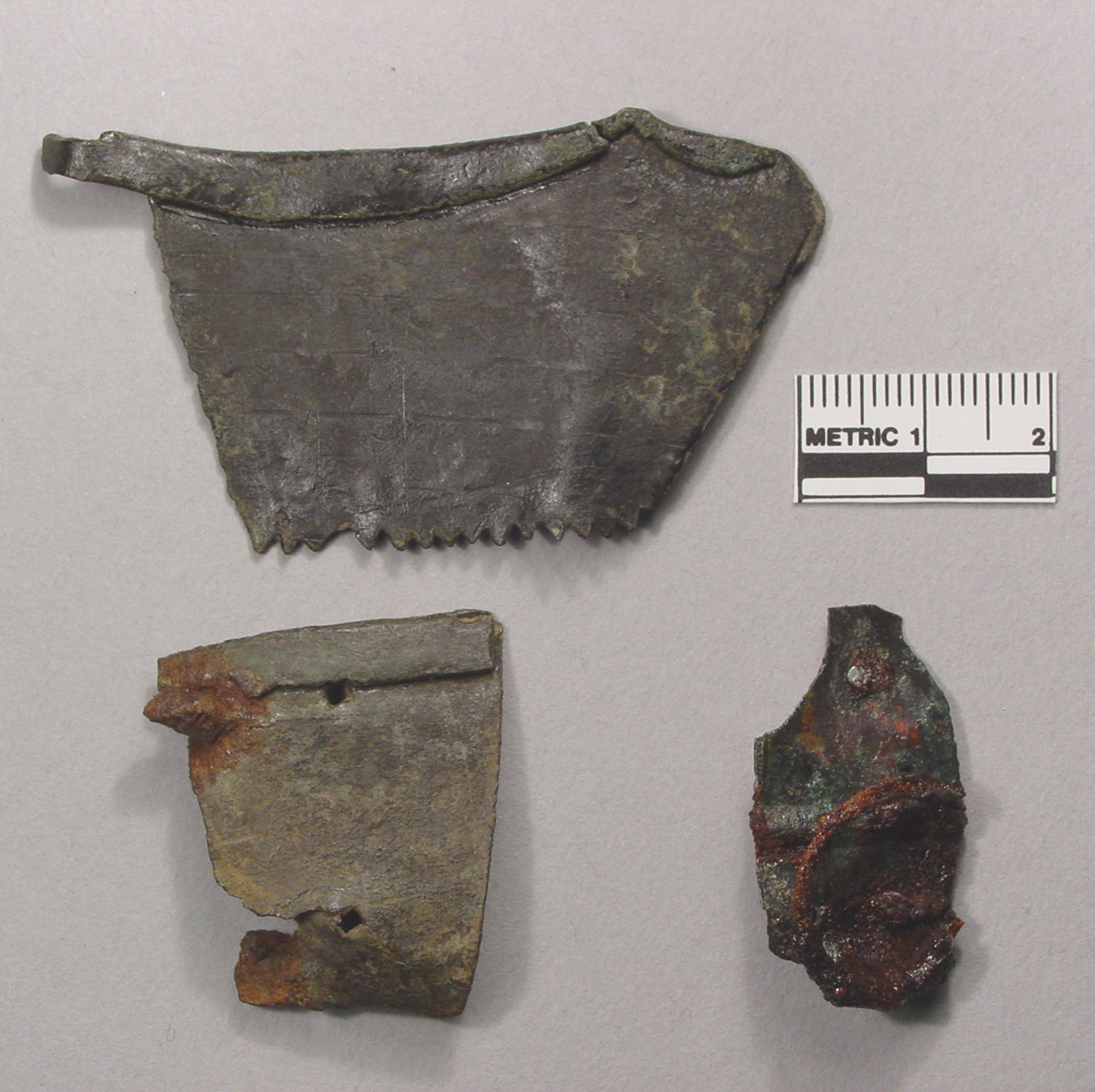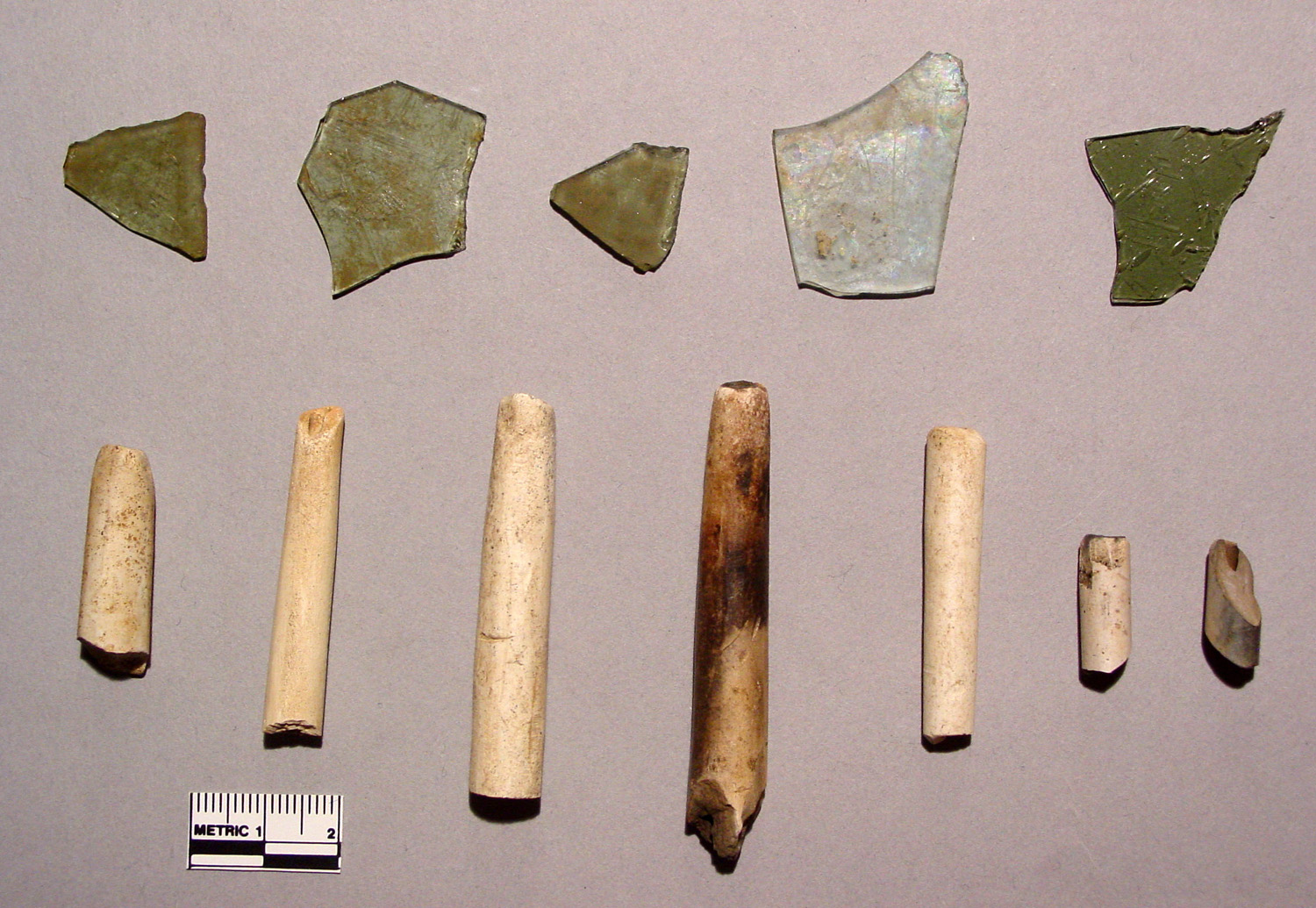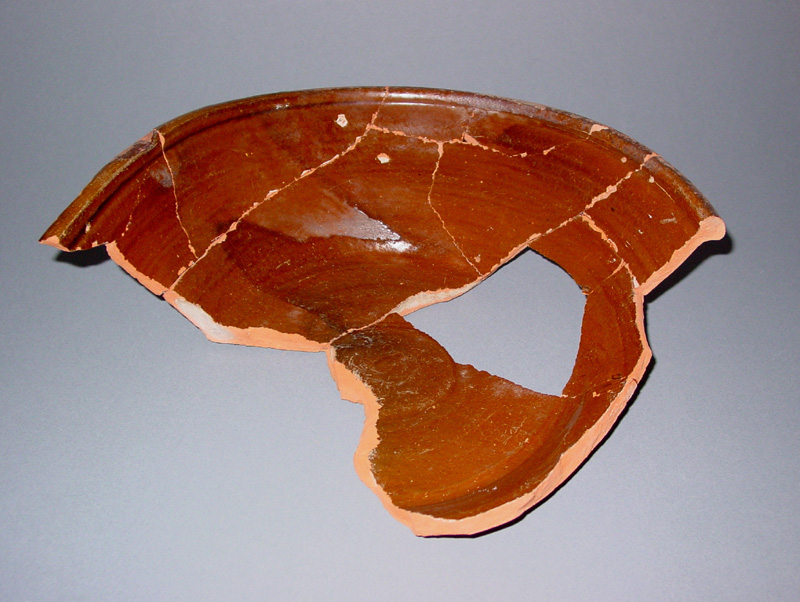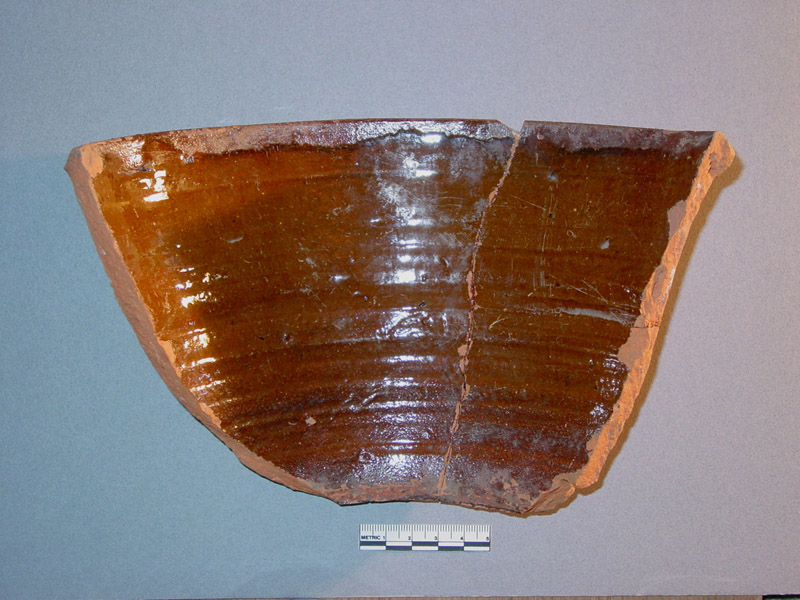
Sewing items, including needles, straight pins, thimbles, scissors and a bone cap, possibly to a needle case. Click image to enlarge.

|
|
Sewing items, including needles, straight pins, thimbles, scissors and a bone cap, possibly to a needle case. Click image to enlarge. |
From the archaeological and documentary evidence we learned that the Sprague family practiced many
crafts
in their household. On a frontier farmstead in a thinly populated area, the Spragues had to make or repair many of their own everyday household items or simply do without. One of the most important crafts at the Sprague House was textile production, which was a long-held tradition in the Sprague family (Ephraim’s father John Sprague was a weaver). The flock of 13 sheep in Ephraim’s probate would have provided the family with ample supplies of wool. Also listed in his probate are
“swifts,”
a
“quill wheel”
and a
“loom.”
Some of the textiles and clothing itemized in Ephraim’s probate were likely
homespun, made in the house. Remnants of carbonized textiles and yarn were discovered on the floor of the south cellar, and straight pins, needles, thimbles and scissor fragments for making and repairing clothing were found throughout the house. Glass beads are indicative of some type of beadwork craft.
In the 18th century most families possessed basic woodworking skills to build and repair their homes and to make furniture, tools, utensils, handles, carts, ox yokes, and plows. Colonial America was a virtual “wooden age,” historian Alice Morse Earle noted, as so many everyday items were made from trees. Hand tools recovered during the excavations included a claw hammer, various flat, half-round and triangular files, a punch and drill bits. There was also a Barlow jackknife, which would have been used to perform a myriad of cutting and whittling tasks. Whetstones, used to keep tools sharp, were also found.
Archaeologists found splitting feathers associated with stonework. Pairs of splitting feathers were set in drilled holes in rocks and a wedge was hammered between the feathers. The holes were evenly spaced in a line in a rock to break off a straight edge. Stone was also shaped by chipping the rock edges with a hammer. Making geometrically-shaped stones was especially important in the construction of fireplaces, such as the hearth and lintel stones. Worked stone was also used in colonial New England to make well linings, arched bridges, mills, dams, wharfs and other large structures.

|
|
Several artifacts made from scrap brass: a small saw, a repaired kettle rim, and a small hasp for a small box. Click image to enlarge. |
Nothing went to waste at the Sprague homestead. Broken brass kettles were repaired or cut up into other useful items such as the small saw and hasp (a kind of latch for a box). Lead was cut and pounded into shapes or melted and cast into molds to make items like lead shot, musket balls, fishing sinkers, net weights and pencils. One small flat piece, a gunflint sheath, was used to secure the flint into the jaws of a
flintlock
musket’s hammer and keep it from shattering or slipping. Although there was no evidence of blacksmithing at the site, the Spragues reworked various scraps of iron to make sieves, funnels and strapping. A large cache of deer antlers was discovered on the floor of the north cellar. Hard but flexible, antler was used to make tool handles, small containers and gunpowder measures, and pulverized, it was mixed with other ingredients to treat “pleurisy” and other diseases. To make fire, a flint
strike-a-light
was struck against a
fire steel
to create sparks which lit tinder. The strike-a-lights from the Sprague Site include gunflints and broken cobbles of European flint. The cobbles likely came over from Europe as ship
ballast
and were collected from the shore where they were dumped.

|
|
Reworked window glass and tobacco pipe stems. Click image to enlarge. |
When windows broke and needed repairing, the Spragues reshaped broken panes to fit into windows by carefully chipping the edges until straight. Such worked glass pieces were also used as tools, such as for smoothing tool handles. When tobacco pipe stems broke, the broken end was chipped or ground down to form a new nib or mouthpiece.
When ceramics broke, they were sometimes mended by drilling pairs of holes along the edge of the break. Wire or twine was used to fasten the pieces together and the holes were then plugged with lead. Two vessels from the site, including a red earthenware pudding pan and a milk pan, were repaired this way.

|

|
|
A red earthenware milk pan with repair holes. Click to see a close-up of the repair. |
A red earthenware pudding pan with repair holes. Click to see a close-up of the repair. |
This pragmatic “make-do” outlook and everyday resourcefulness were values fully integrated into New England Yankee culture. This philosophy was popularized by Boston-born Benjamin Franklin in his writings in Poor Richard’s Almanac with such advice as “All things are cheap to the saving, dear to the wasteful,” and “Every little makes a mickle (much).”